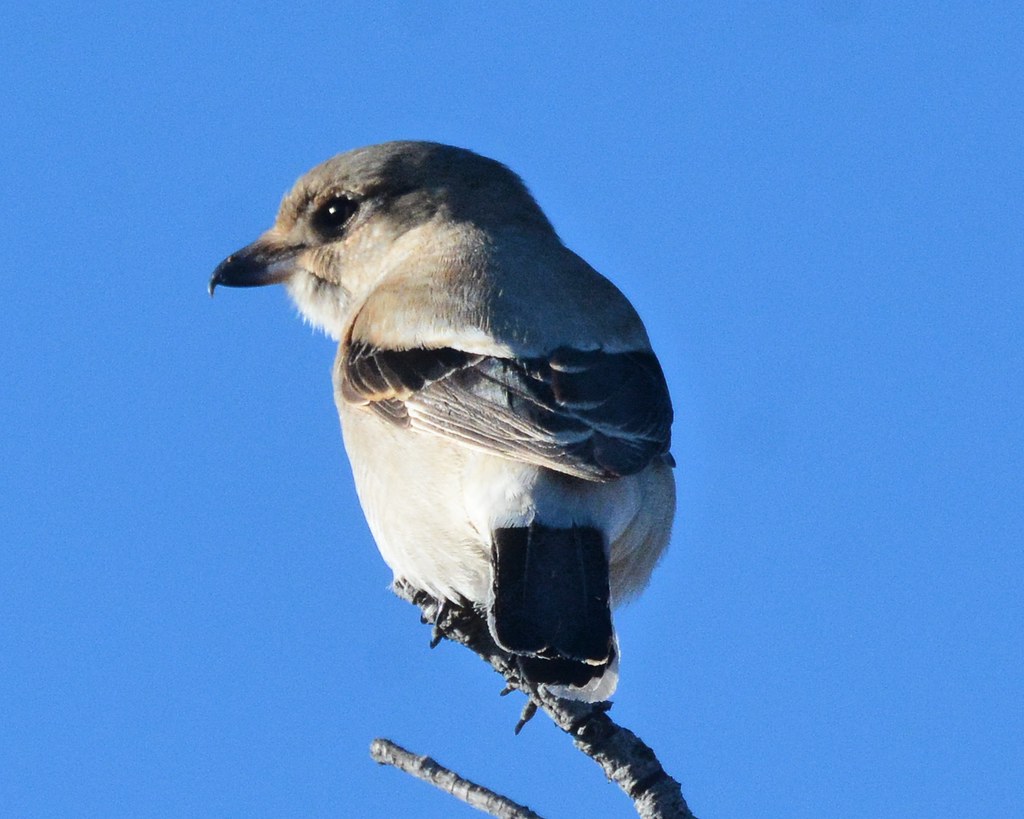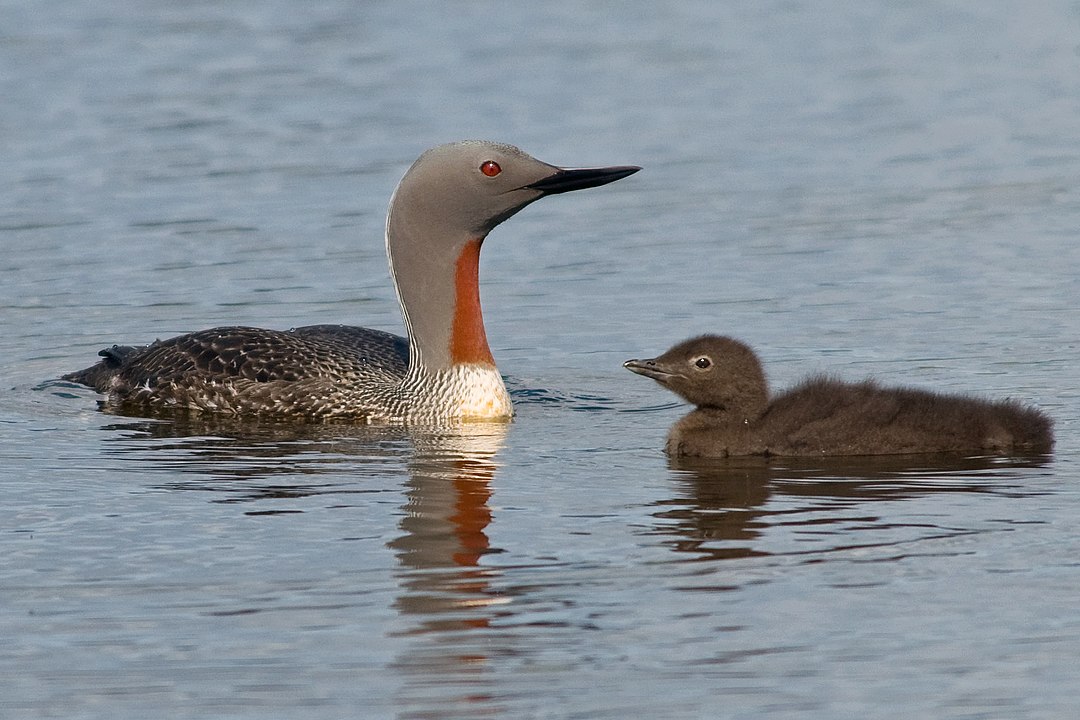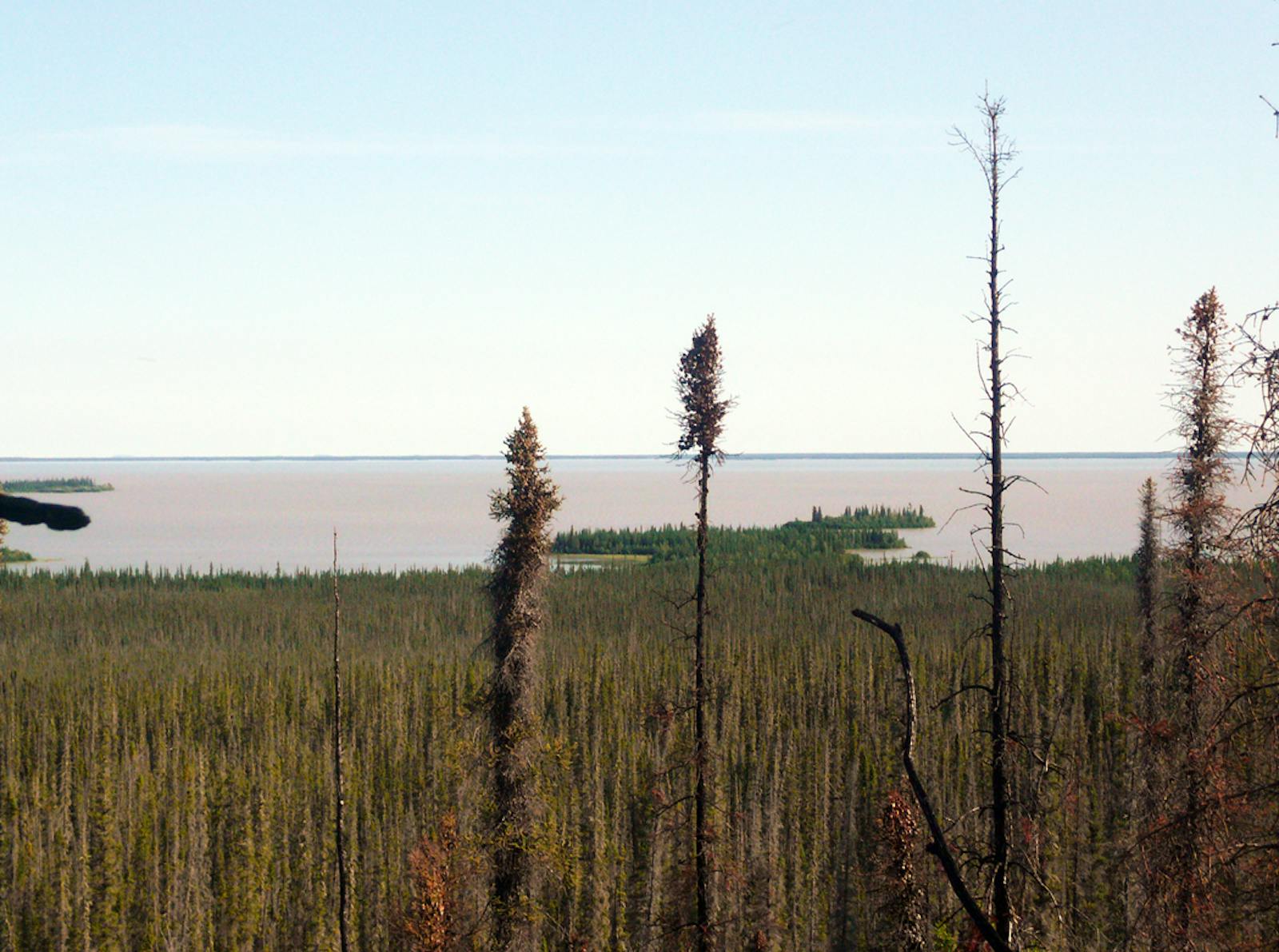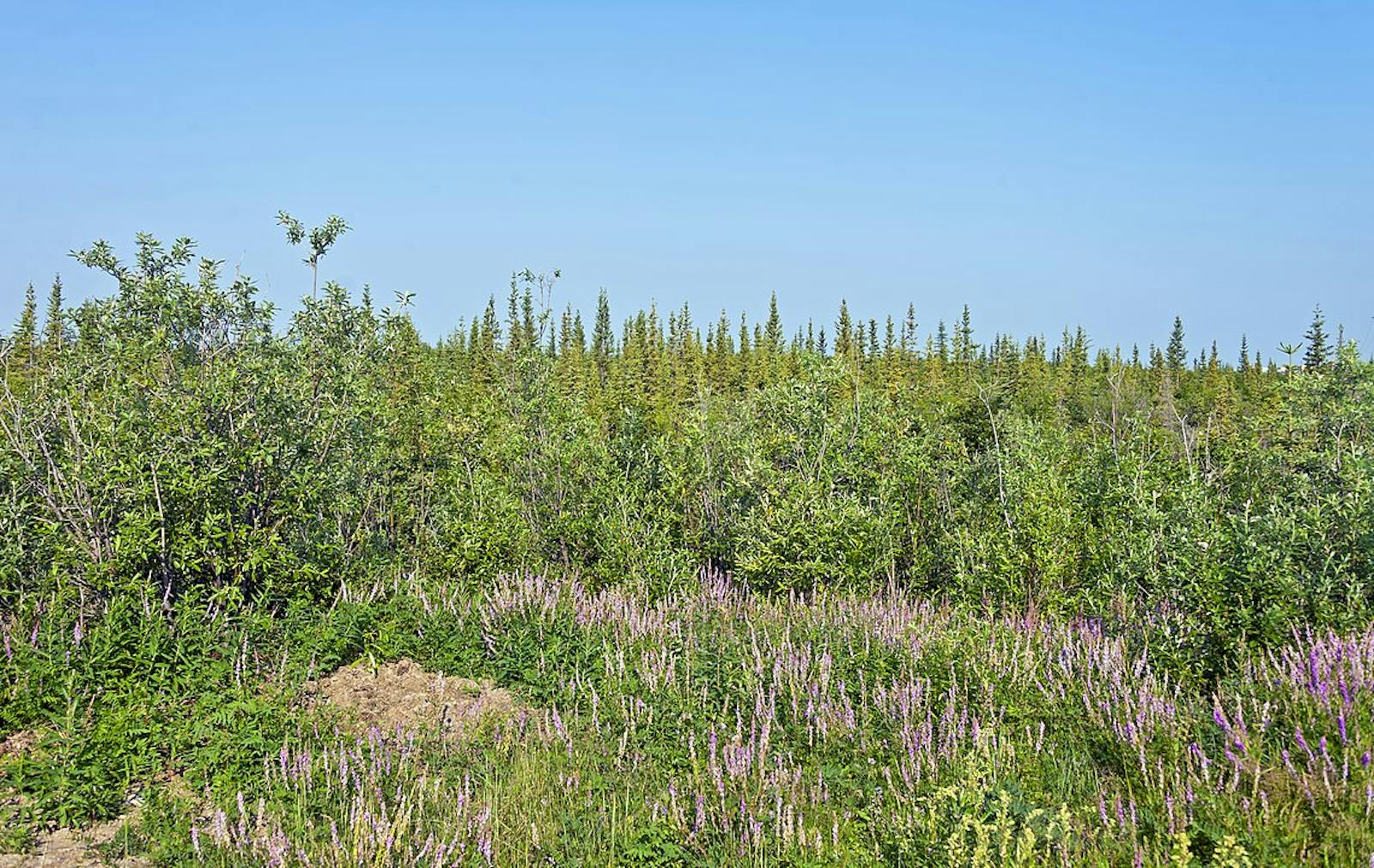Northwest Territories Taiga
The ecoregion’s land area is provided in units of 1,000 hectares. The protection goal is the Global Safety Net (GSN1) area for the given ecoregion. The protection level indicates the percentage of the GSN goal that is currently protected on a scale of 0-10. N/A means data is not available at this time.
Bioregion: Northwest Canadian Taiga, Lakes, & Wetlands (NA7)
Realm: Subarctic America
Ecoregion Size (1000 ha):
33,290
Ecoregion ID:
381
Protection Goal:
93%
Protection Level:
0
States: Canada: NT, YT
The Northwest Territories Taiga ecoregion is the northern extension of the generally flat Interior Plains of Canada, which include the boreal plains and prairie ecoregions to the south. The ecoregion encompasses a large part of the Northwest Territories, including almost all of Great Bear Lake – the largest lake entirely within Canada – and its shoreline, as well as most of the Mackenzie River Valley from near Fort Simpson north to the upper portion of the delta close to the Beaufort Sea.

The flagship species of the Northwest Territories Taiga ecoregion is the northern shrike. Image credit: Courtesy of John Breitsch, Flickr.
There, the ecoregion borders a narrow strip of the Arctic Foothills Tundra and Canadian Low Arctic Tundra ecoregions along the Beaufort Sea. The Mackenzie River is the longest river system in Canada and is second only to the Mississippi River in North America for size of drainage basin. To the east of this ecoregion lies the Northern Canadian Shield Taiga and to the south the Muskwa-Slave Lake Taiga, where the Northwest Territories Taiga borders the northwestern shore of Great Slave Lake, the deepest lake in North America and the origin of the main stem of the Mackenzie River.
The western boundary is entirely with the Ogilvie-Mackenzie Alpine Tundra ecoregion and includes a small part of northern Yukon Territory. The Arctic Circle passes through this ecoregion, across northern Great Bear Lake. Although this ecoregion is predominantly wild, it alarmingly has no protected areas. However, 89% of habitat outside of protected areas remains intact and suitable for protection.
The climate of this ecoregion is low to high subarctic, characterized by short, cool summers and long, cold winters. The mean winter temperature ranges dramatically from -26.5ºC in the north to a relatively mild -1ºC in the south. The mean summer temperature varies from 6.5ºC to 14ºC. Precipitation across the region is relatively low, mostly in the range of 100 mm to 400 mm but reaching 500 mm in the southwest.
The ecoregion was affected by multiple glaciations and is still rising from post-glacial rebound (a rise in the land surface after retreat of the heavy ice sheets) after the last glaciers retreated. However, portions of the ecoregion may have been unglaciated and served as a Pleistocene refugium for plant species. The flat to gently rolling topography supports a dominant vegetation of open, stunted stands of black spruce. The tree line, however, is much further north than in the Northern Canadian Shield Taiga ecoregion to the east, extending to the northernmost point of the Northwest Territories Taiga ecoregion.

Red-throated loon. Image credit: David Karnå, Creative Commons
Major shrubs in this taiga are dwarf birch, Labrador tea, and species of willow. Low-lying wetlands cover approximately 25–50% of the ecoregion. Better drained areas, such as uplands and foothills, as well as the southern portion of this ecoregion support mixed-wood boreal forests of white and black spruce, lodgepole pine, tamarack, paper birch, quaking aspen, and balsam poplar. White spruce and balsam poplar reach their greatest heights on natural levees along rivers. Lightning fire provides for a shifting mosaic of post-fire successional communities across the ecoregion.
Characteristic mammals in this ecoregion include woodland caribou, moose, bison (especially in the south), wolf, black bear, lynx, marten, and Arctic ground squirrel. Birds include red-throated loon, sharp-tailed grouse, bald eagle, peregrine falcon, osprey, several species of migratory waterfowl, common raven, gray jay, northern shrike, fox sparrow, and common redpoll. Due to its northern location, great depth (452 m), and nutrient-poor watershed, Great Bear Lake has fewer fish species (16 species) than other large lakes in Canada, despite being the largest. Mine tailings rich in uranium and heavy metals have compromised the fisheries in Great Bear Lake.
The lack of protected areas in this ecoregion is troubling because human impacts are increasing in magnitude, especially in the relatively accessible Mackenzie River Valley. Although 89% of the region is still essentially intact, mining, oil and gas development (with seismic lines), and small-scale logging are increasing. Especially troubling is the proposed extension of the Mackenzie Highway, which follows the Mackenzie River. The road currently as its northern terminus in the town of Wrigley. However, funding was approved in 2018 to extend the all-weather road 15 km northwardii, and long-term plans have it extending much further north.
Priority conservation actions for the next decade are: 1) protect remaining intact habitat, especially in the Mackenzie River Valley, where it is most threatened; 2) greatly increase federal and provincial designation of conservation lands; and 3) reduce and closely monitor the extent of mining, oil and gas exploration and production, hunting, and other human activities outside protected areas.
Citations
1. Ricketts, T.H. et al. 1999. Terrestrial Ecoregions of North America: A Conservation Assessment. Island Press, Washington, D.C.
2. Elliott-Fisk, D.L. 2000. The taiga and boreal forest. In M.G. Barbour and W.D. Billings, editors. North American Terrestrial Vegetation, 2nd edition. Cambridge University Press, Cambridge, U.K.
3. Noss, R.F., K. Bennett, E. Butterworth, C. Francis, A. Couturier, P. Paquet, and K. Vance-Borland. 2002. Conservation Biology for Canada’s Boreal Forest. A project of the Canadian Boreal Trust (Pew Charitable Trusts). Conservation Science, Inc. Corvallis, OR.



